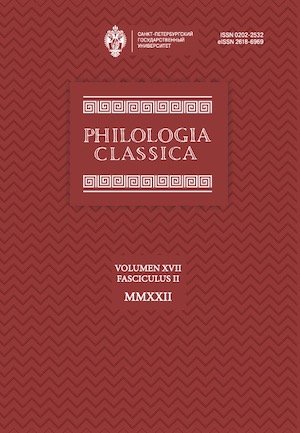Four Hooves and a Horn: How (Not) to Poison Alexander the Great
DOI:
https://doi.org/10.21638/spbu20.2022.206Abstract
Several ancient authors tell a puzzling story of treason to murder Alexander the Great by presenting him with poison or poisonous water carried in a curious vessel — a hoof of a horse, a mule, or an ass. Porphyry of Tyre, citing Kallimachos and Philo the Paradoxographer, gives us a reason to believe that the mention of hoof-made vessels was a misinterpretation of hornmade chalices, or put otherwise, drinking horns. Presuming that the vessel in question indeed was a drinking horn, we are left with an unusual image — Alexander the Great perished after drinking the poisonous water from the horn of a hornless animal. We can look into the development of this legend and propose its origins by examining mutual features of two distinct traditions — the Greek legend of the river Styx and its lethal streams and the Indo-Iranian tradition of several miraculous features of a unicorn’s horn, attested in Iranian, Indian, and Greek sources. After the survey of relevant sources, we see that the horn from Philo’s story represented a legendary present of Indian rulers intended to save Alexander the Great from harm. Various layers of misapprehension transformed the legendary gift into a device contracted to harm him. This way, the author demonstrates two points: 1) that the story told by Porphyry in Styg. 375F is a part of an Indo-Iranian tradition about unicorns and their miraculous features; and 2) that the legend of Alexander’s poisoning represents a transformed and misinterpreted story of Alexander’s grandest gift.
Keywords:
the river Styx, unicorn, royal gift, Indo-Iranian traditions, Alexander the Great, paradoxography
Downloads
References
Downloads
Published
How to Cite
Issue
Section
License
Articles of "Philologia Classica" are open access distributed under the terms of the License Agreement with Saint Petersburg State University, which permits to the authors unrestricted distribution and self-archiving free of charge.






